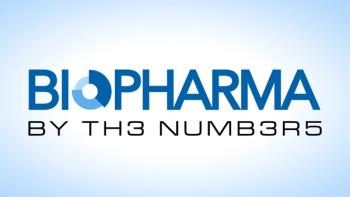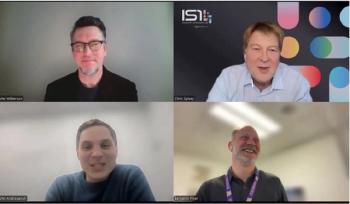
Reducing CAR-T Manufacturing Times and Cost: Q&A with Trenchant’s Jon Ellis
Key Takeaways
- Trenchant BioSystems' technology reduces CAR-T manufacturing time to two-and-a-half days, significantly lowering costs by up to 80%.
- Automation in manufacturing is essential for reducing human error, ensuring consistency, and enabling scalable production of CAR-T therapies.
Jon Ellis, CEO, shares his thoughts on Trenchant BioSystems’ new technology, its reception within the cell and gene therapy sector, and the future nature of industry partnerships.
As part of its coverage of the
In the following conversation, Ellis also talks about Trenchant’s partner
Editor's note: This question-and-answer was transcribed from a video interview and may contain errors, informal language, or omissions as spoken in the original recording.
BioPharm: Can you explain your technology to reduce CAR-T manufacturing times, and how it reduces costs?
Ellis (Trenchant): We believe we can get manufacturing times down significantly. We've got a few core technology components within our platform that really minimize cell loss during the manufacturing process, such that we believe in a lot of cases, expansion of cells won't be necessary—which trims off the majority of the manufacturing time. Within that, we've got some proprietary technology [in the areas of] cell selection, aseptic connection, and management of the overall manufacturing process.
In addition to that, we're also now exploring analytics as well, how we can integrate and automate analytics. Because with a major therapy, analytics takes a fair amount of time to get completed so that you can release the product to patients. So, [we] really kind of focus on the whole end-to-end journey and really bringing that manufacturing time down, especially when we're talking, in a lot of cases, about end-stage cancer patients, where time is really critical.
BioPharm: Where are we on the path from CAR-Ts being scientifically possible, to commercially viable?
Ellis (Trenchant): Scientifically possible, in a lab, on a bench, is one thing. But then to be able to make [CAR-Ts] at clinical scale, and then being able to scale them to treat lots of patients, is where the real challenge comes in. And I think a lot of repurposed technology has been used in this sector and used to some success, but we now need new technologies that can really introduce automation into the manufacturing process, which solves two problems. Machines are typically cheaper than people, because we have to get the cost out of manufacturing. Of course, that's separate from the price of a therapy. Those two things shouldn't be conflated, but reducing manufacturing cost is so important. And also being able to automate therapy, so that we can put the cost down there.
Also, automation reduces consistency, which takes away the human error or human variability component in manufacturing, which is the fact that humans are not great at doing the same thing the same way every single time. And so really, automation is absolutely necessary so that we can scale these affordably and safely. And if you start talking about decentralized manufacturing, where there's going to be less oversight and less experience of the manufacturing process, that's just the way it is. For that to work, we really do need strong automation so that these products can be made safely, and each site, each patient, will get the same therapy and not something that's impacted by human variability.
BioPharm: How have your methods been received by the CGT sector?
Ellis (Trenchant): It’s a slightly different answer depending on who you're talking to. We're still in development, so we have a prototype right now. So our product’s not yet commercially available; that obviously impacts the answer somewhat. We've got a huge list of people desperate for our platform to get to market. There's no shortage of people who really are keen to see it implemented in that facility, because everyone's got the same problems. You've been to the same conferences for the last 10 years, talking to the same people who are participating in the same talks, all saying the same thing, [and] hopefully we can learn something.
We wanted something else to really address those challenges, so I think that the desire for the manufacturing folks, whether it be Big Pharma, whether it be a CDMO [contract development and manufacturing organization], or whether it be an academic center, the desire for something better, more automated, more cost effective, is absolutely there, with no shortage of people wanting it.
On the investor side, like every other company, we're obviously raising money, and that's a challenge, obviously. Over the last few years, in particular the last four months, raising capital is difficult. Investors are absolutely on board with what we're doing, they really see value in it, but converting that into raised dollars is not easy. So we've found ways to work around that and then continue to develop, but it's not easy. Again, it's not the lack of belief in what we're doing that's the problem. It's just a lack of free capital in the markets right now, which is somewhat challenging for us, like it is for every other company. Whether it be a tools company, a biotech, anyone raising money right now is not having any time of it—so, again, it's not because people don't believe in the science. It's not because they don't believe in therapies. It's just there's not much free cash floating around. So that is challenging.
I think from the development side of it, whether it's talking about an academic center with an idea or talking about a small biotech with something new in development, again, there's real excitement, because with our platform, we've got something which is really scalable. You can go from preclinical, through to doing studies on the bench, through to clinical scale, and get the same performance. The cells behave in the same way. And that's really important, because that has been an issue in the past, where just because you can perform some kind of bench at small scale, and even a mouse model, doesn't mean necessarily you're going to be able to do the same thing at a clinical scale. And again, of course, does that then scale out to treat all patients [that] you need to?
So I think we've really focused on that, to really make sure that what we're doing does scale up in terms of going from bench testing through to what a clinical dose would be. And then from there, such that it can treat as many patients [as] are going to need that therapy. I think that's really been important, something we’ve really put a lot of effort into, the design.
BioPharm: What's crucial for companies to address for the future?
Ellis (Trenchant): I think what we need to do as an industry--and it's not the first time I’ve said this, won’t be the last—is put much more emphasis on collaboration. And by that, I don't mean press releases and going to an event and holding hands. I mean real collaboration, where competitors actually work together to help the industry all rise together, because there are things which we can collaborate on that are not going to impact anyone's IP [intellectual property] or trade secrets. Everyone's got their own pockets of experience and generalized knowledge that could really help tools providers as they're developing a new platform, how to make sure that those technologies avoid regulatory issues and avoid some common pitfalls.
Then on the clinical side of things, also on the clinical manufacturing side of things, again, you get new pipelines, new companies, new ideas. What are the common pitfalls and challenges that people have come across? Really, they're not IP, they're not even trade secrets. It's just common knowledge that a lot of experienced people have but haven't necessarily shared. And I think if we can work together to cut out a lot of common mistakes and a lot of things which are going to trip people up that are unnecessary, that's going to help the industry grow together. Because what we don't want, at all, is for patients to get hurt or patients not to get treated as effectively as they could be.
Or, for devices, investors come in, they put money into a company with a device, and that device simply can't be used because of something that's been an oversight. That doesn't benefit anybody, because that makes investors run away, which hurts us all. Patients, like I said, we don't want them to get hurt, obviously, and we don't companies to die. Despite the fact they’re our competitors, you might say, well, why did I help my competitor out? But that helps us all out, because we just don't want to see bad things happen to the industry. We don't want bad press. We want to make sure everything's done efficiently and safely.
And so I think that comes down to data sharing. It comes down to lessons learned, that we could learn as an industry. Now in terms of oversight, I know Autolomous are doing a great job with really trying to get something off the ground in terms of piloting a data sharing program across some academic centers, which is fabulous to see. I think that they’re really the trailblazers in this, and I want to see it growing further. And whether a regulator needs to get involved or a trade body, I don't know, but I think it will be really, really important.
And again, partnership doesn't mean press releases and showing up at events and smiling. It's doing something tangible that's going to benefit the industry as a whole. And so that is what I really want to see more of. I know in the past, it hasn't been done. We've heard ‘the process is a product,’ and I’m not against that whole argument right now, but clearly whenever that statement’s made, it does obviously make people put their arms around what they have very, very tightly and not want to share it, understandably.
But I think now we've got a different point. I think we know the importance of analytics. We know that what's really important is how you characterize what you're doing, how you characterize your therapy, so that you really can be sure that patients all get the same clinical product. So that's my big wish, desire for the industry. I think it's something that moves forward, and we need to right now, because money is not readily available, we've got to make the best use of what we've got, and so being more efficient is important.
Newsletter
Stay at the forefront of biopharmaceutical innovation—subscribe to BioPharm International for expert insights on drug development, manufacturing, compliance, and more.





